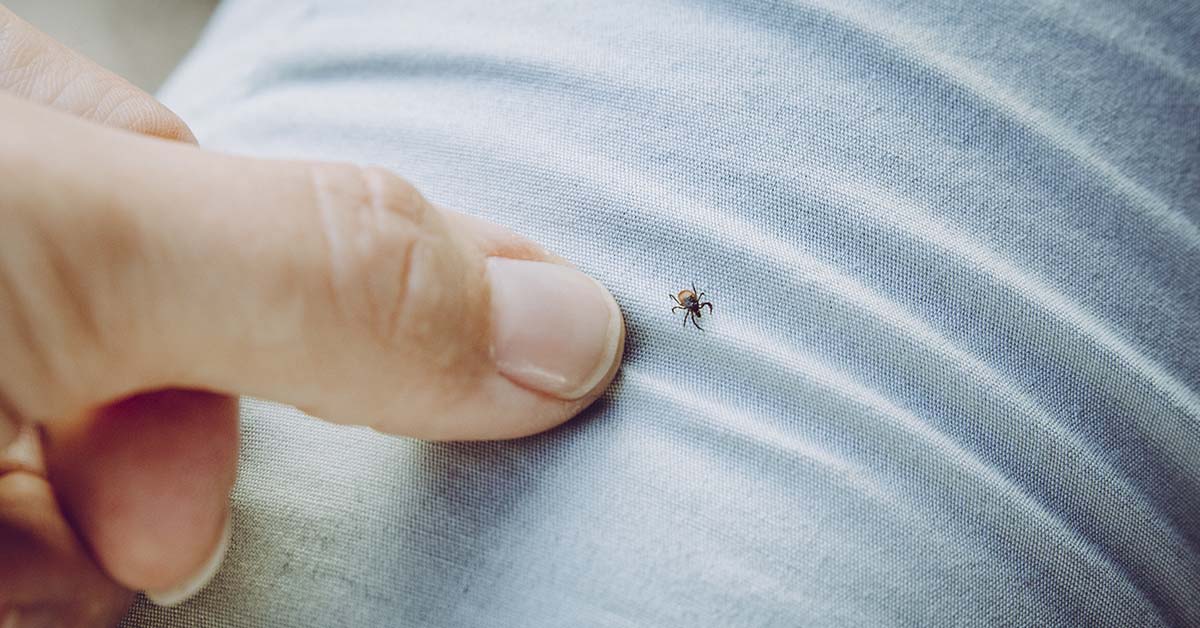In South Carolina, tick bites can occur year-round. As we spend time outdoors playing in the grass, walking in the woods or even working in the yard, we can inadvertently put ourselves in the path of the hungry hitchhikers.
“Many people who live if our area are outdoors frequently, which can increase our likelihood of exposure to ticks,” says Dr Sean Nguyen, a family medicine physician at Tidelands Health Family Medicine at The Market Common.
Here are four things to keep in mind when it comes to ticks:
Ticks can carry disease
The list of diseases that can be transmitted by ticks is long. Many are bacterial infections passed by the tick when it bites you. Tick-borne disease can produce a wide range of symptoms, with rashes being one of the most obvious. The most famous tick-related disease, Lyme disease, is caused by a bacteria transmitted by deer ticks, which are common in the Northeast.
“Lyme disease is quite rare in this area, but I have seen some cases over the years,” Dr. Nguyen says.
Ticks wait for you
Unlike other pests, such as the mosquito, ticks don’t fly. In fact, they don’t move much at all. South Carolinians often encounter six kinds of ticks: The blacklegged, lone star, American dog, brown dog, Gulf Coast, and Asian longhorned tick. Each of them waits patiently on a blade of grass, a low-hanging leaf or other object so they can ambush a warm-blooded passer-by (such as you) and get a free meal.
How to avoid ticks
Ticks like tall grass, marshy woodlands and piles of dead leaves, so avoiding those areas is a good first defense against them.
If you’re going to be hanging out in tick stomping grounds, add some insect repellent with DEET to your preparation for the day. The U.S. Centers for Disease Control and Prevention recommends a product with 20 to 30 percent DEET. If you’re going to be out for a long time, be sure to reapply every eight hours or so to keep the bloodsuckers at bay.
It’s also a good idea to cover any exposed skin. Wear a broad-brimmed hat, long sleeves and long pants (tucked into your socks) to make it harder for ticks to find a soft spot to chow down.
How to treat tick bites
When you come home from being in tick territory, check yourself and your pets for hangers-on. Pay special attention to warm spots such as your groin, armpits and scalp, as well as places where your clothes fit snugly, such as your waistband and socks.
If you find a tick has attached, the first step is not to panic. The South Carolina Department of Health and Environmental Control advises you to promptly use tweezers to grip the tick as close to the skin as possible and pull gently but firmly straight out to help ensure no parts break off and remain in your skin. Afterward, clean the bite with soap and water followed by an antiseptic.
It’s a good idea to keep the tick stored safely away while you monitor yourself over the next several weeks for symptoms such as a rash, fever, nausea or sensitivity to light. If you experience symptoms, seek prompt medical care. To aid with treatment, bring the tick with you.

Bio
Dr. Sean Nguyen is a family medicine physician practicing at Tidelands Health Family Medicine at The Market Common in Myrtle Beach. A native of Myrtle Beach, Dr. Nguyen speaks English and Vietnamese.
Learn MoreMedical Education
Education
Wofford College, Medical University of South Carolina
Internship
Tidelands Health MUSC Family Medicine Residency Program
Meet the Expert
Dr. Sean Nguyen
Dr. Sean Nguyen is a family medicine physician practicing at Tidelands Health Family Medicine at The Market Common in Myrtle Beach. A native of Myrtle Beach, Dr. Nguyen speaks English and Vietnamese.





